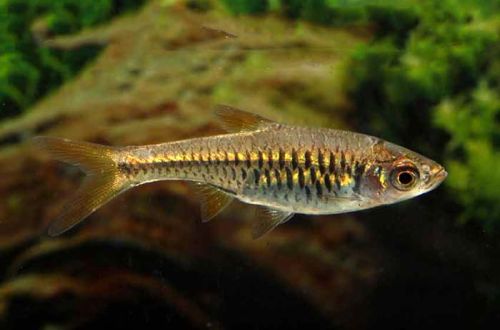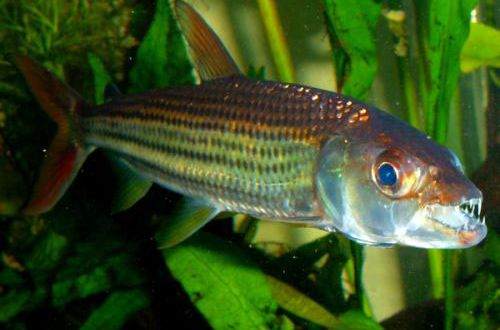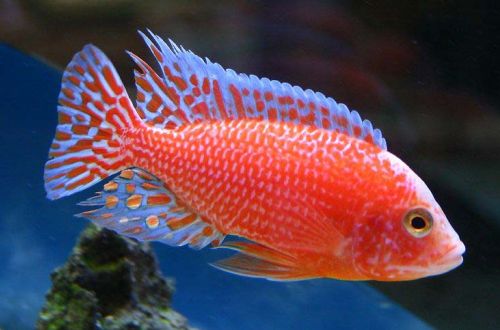
Mesh Rasbora
Reticulated Rasbora, scientific name Rasbora reticulata, belongs to the family Cyprinidae (cyprinids). The fish is native to Southeast Asia. It is endemic to the island of Nias, located west of Sumatra. It occurs mainly in swampy areas of rivers and other water bodies with a weak current and an abundance of aquatic vegetation.

Contents
Description
Adult individuals reach a length of no more than 6 cm. The color is light golden. The edges of large scales have a dark edging, giving the body a mesh pattern, for which the fish got its name.
However, the pattern does not always appear, and in this case, the fish begins to look like its closest relative Rasbora volcano (Rasbora vulcanus) from the neighboring island of Sumatra.
Sexual dimorphism is weakly expressed. Males and females do not have obvious visible differences, but the latter seem to be somewhat larger, which is especially evident during the spawning period.
Behavior and Compatibility
Peaceful schooling fish, get along well with each other and other non-aggressive species of comparable size. A good choice would be small cyprinids from among the barbs, zebrafish, parsing, etc.
Brief information:
- The volume of the aquarium – from 80 liters.
- Temperature – 24-28°C
- Value pH — 6.0–7.5
- Water hardness – soft to medium hard (1-15 dGH)
- Substrate type – any
- Lighting – subdued
- Brackish water – no
- Water movement is weak
- The size of the fish is up to 6 cm.
- Meals – any
- Temperament – peaceful
- Keeping in a flock of 8-10 individuals
Maintenance and care, arrangement of the aquarium
The optimal size of an aquarium for a polar cod of 8–10 individuals starts from 80 liters. In the design, it is desirable to provide places for shelters in the form of thickets of plants and snags. The lighting is subdued.
To make the design more natural, experienced aquarists place dried (then pre-soaked) leaves of some trees on the bottom. In the process of decomposition, the water is saturated with tannins, which gives it a brownish tint. More details in a separate article “The leaves of which trees can be used in an aquarium.”
The content is relatively simple, if all the necessary requirements for the composition of the water are met and regular maintenance of the aquarium is carried out.
Food
An omnivorous species, will accept most popular foods of a suitable size.
Breeding / breeding
Breeding is similar to other types of Rasbor. They spawn in groups among thickets of plants, which is preceded by active mating games. There is no care for the offspring, so eggs and fry can be eaten.





